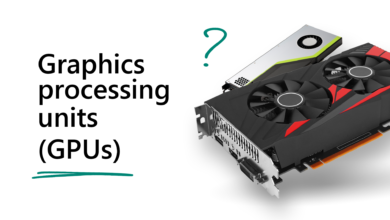
Introduction
The world of robotics is advancing at an unprecedented pace. From the early days of industrial robots handling repetitive tasks to today’s highly sophisticated AI-driven machines, robotics is set to transform nearly every sector of the global economy. As robots become more intelligent, energy-efficient, and accessible, industries such as manufacturing, healthcare, logistics, and even retail are being reshaped. This article delves into the emerging trends in robotics, how they are revolutionizing industries, and what the future holds for human-robot collaboration.
AI-Powered Robotics: Smarter and More Adaptable
One of the most significant developments in robotics is the integration of Artificial Intelligence (AI). AI-driven robots can now learn from their environments, adapt to new tasks, and handle unpredictability with greater precision. This shift is revolutionizing industries such as manufacturing and logistics, where robots are being used for complex tasks like managing inventory, optimizing production lines, and interacting with humans on collaborative projects.
For example, autonomous robots in logistics can now transport goods in warehouses without the need for human intervention. These robots are equipped with sensors, cameras, and AI algorithms that enable them to navigate through complex environments while optimizing routes and processes. In manufacturing, robots are now capable of handling more than just repetitive tasks—they can adjust to changes in product specifications, reducing downtime and increasing efficiency
The rise of cobots—collaborative robots designed to work alongside humans—is another notable trend. These robots are becoming an integral part of workforces across various industries, assisting in tasks that require precision and endurance, such as product assembly or quality inspections. With AI, cobots can continuously learn and improve their performance, reducing the time and cost required for programming and task-specific customizations.
Energy-Efficient Robotics: Reducing Carbon Footprints
As industries strive to reduce their environmental impact, energy efficiency in robotics is becoming a key focus. Modern robots are not only more powerful but also designed to consume less energy. Technological advancements such as energy recovery systems allow robots to capture and reuse energy, similar to how regenerative braking works in electric vehicles.
In manufacturing plants, robots can now operate on renewable energy sources and perform more tasks with lower energy inputs. This not only reduces operational costs but also supports industries in their sustainability efforts, which is increasingly important as environmental regulations tighten across the globe
By lowering the carbon footprint of industries, energy-efficient robots are helping sectors like automotive and electronics meet stringent environmental standards while maintaining high levels of productivity. These developments make robots an appealing option for businesses aiming to balance profitability with environmental responsibility.
Reshoring and Automation: A Shift in Global Manufacturing
The combination of AI and energy-efficient robotics is contributing to a trend known as reshoring—bringing production back to home countries to reduce dependence on global supply chains. Particularly in industries like semiconductors and automotive, reshoring is gaining traction as a way to ensure supply chain resilience and reduce production costs.
For example, chip manufacturing relies heavily on robotics for tasks such as silicon wafer production and quality control. By automating these processes, manufacturers can cut labor costs while improving precision and reducing the chances of defects. Robotics also plays a crucial role in optimizing supply chain operations, allowing factories to adjust production in real time based on demand, reducing lead times and waste
As the costs of labor and raw materials rise globally, reshoring strategies supported by advanced robotics are helping companies remain competitive. This shift is expected to reshape global trade dynamics in the coming decades, leading to more localized production hubs that rely on automation to meet demand.
Democratizing Robotics: Low-Code/No-Code Interfaces
One of the most exciting trends in the future of robotics is the rise of low-code/no-code platforms, which enable businesses without technical expertise to integrate robotics into their operations. These platforms simplify the programming and control of robots, making them accessible to small and medium-sized enterprises (SMEs).
Previously, the adoption of robotics was limited to large corporations with the resources to hire robotics engineers. However, with low-code/no-code interfaces, even small companies can program robots to perform tasks such as packaging, quality control, and inventory management. This democratization of robotics is expected to accelerate adoption across various sectors, particularly in industries like e-commerce, retail, and agriculture, where automation can lead to significant efficiency gains
Robotics in Healthcare: Transforming Patient Care
The healthcare industry is one of the key beneficiaries of advancements in robotics. Robotic surgery systems, such as the Da Vinci robot, have already revolutionized surgery by offering precision that surpasses human capability. These robots enable surgeons to perform minimally invasive procedures, reducing recovery times and improving patient outcomes.
Robotics is also making waves in areas like patient care and rehabilitation. Autonomous robots can assist with daily tasks in hospitals, such as delivering medication, while rehabilitation robots help patients recover mobility by guiding them through physical therapy exercises. In the near future, AI-driven diagnostic robots could analyze medical data to assist doctors in diagnosing diseases more accurately and efficiently
The Future: Balancing Automation with Human Labor
While the future of robotics offers incredible potential for growth, it also presents challenges, particularly in terms of employment. The increased automation of tasks traditionally performed by humans may lead to job displacement in sectors such as manufacturing and retail. However, as with past technological revolutions, the rise of robotics is also expected to create new job opportunities in fields like robot maintenance, programming, and AI training
To balance automation with job creation, governments and industries must invest in upskilling programs that equip workers with the skills needed to thrive in a robotics-driven economy. By doing so, we can ensure that humans and robots work together to create more efficient, sustainable, and inclusive economies.
Conclusion
The future of robotics is nothing short of revolutionary. With advancements in AI, energy efficiency, and user-friendly interfaces, robots are becoming more intelligent, sustainable, and accessible across industries. Whether it’s reshaping manufacturing, improving healthcare, or democratizing automation for SMEs, the impact of robotics is set to transform the way we live and work.
As we look ahead, the challenge will be ensuring that this technology serves as a complement to human labor rather than a replacement. By embracing the potential of robotics while preparing for its societal impacts, we can build a future where robots not only enhance productivity but also contribute to a more prosperous and equitable world.
Published by CybaPlug.net: Your ultimate destination for tech news, gaming insights, and digital innovations.
Stay plugged in!
Hi I'm Olly, Co-Founder and Author of CybaPlug.net.
I love all things tech but also have many other interests such as
Cricket, Business, Sports, Astronomy and Travel.
Any Questions? I would love to hear them from you.
Thanks for visiting CybaPlug.net!





